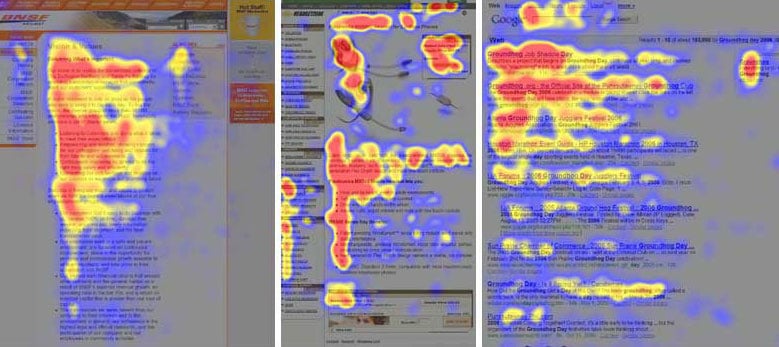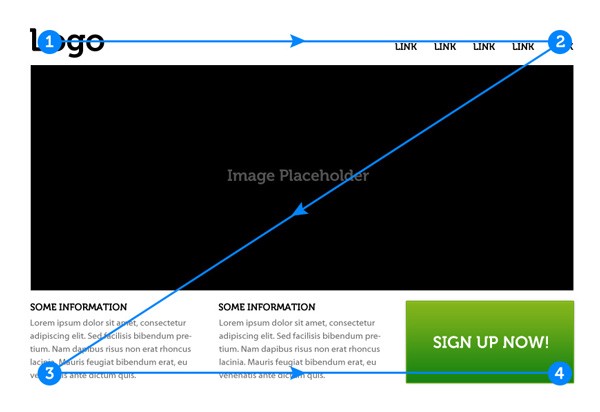What if I told you that the majority of visitors to your site aren't actually reading your content but are just skimming it? The fact is most people simply don't bother reading everything on your page. There are many reasons for this, but they all stem from a simple notion: the ways people read online versus with print are completely different. To have customers or readers spend more time on your webpage and get the most out of your content, you need to understand how to write for the web, but you can only get there if you understand how to read on the web.
Reading on the Web
As unique as the people of the world are, they share many common traits, most of which are biologically advantageous for survival reasons. The way the human eye works is one of those common traits. Naturally, the human eye is attracted to points of interest, and this leads people to follow specific trends when it comes to eye movement. Through the use of eye tracking technology, many tests have been conducted to see how people read on the web. The results of these tests have presented two main types of eye patterns: the F-Shaped pattern and the Z-Shaped pattern.
F-Shaped—With the F-Shaped pattern, as the name implies, individuals read content on the web in an F-shaped direction (two horizontal stripes followed by a vertical stripe). According to a study from the Nielson Group, people browse almost everything on the web in this pattern. This is the most researched and backed method of reading on the web and is universally accepted as the most common reading pattern.

Z-Shaped—The Z-Shaped pattern is another form of online reading in which, as the name suggest, readers follow the shape of the letter Z. With this pattern, online readers scan pages from left to right and from top to bottom. Although this pattern is supported as well, there are two things to note. First, this type of pattern only works well when the page does not have a lot of actual content and has a good amount of white space. Second, this is more prevalent with westerners, as they are used to reading from left to right.

When it comes to reading on the web, most people simply don't read all the content on a page. If your content is too long and is not formatted to optimize online reading patterns and skimming, readers might not get the important information you are trying to communicate. According to a study done by Slate, typical online readers actually only fully absorb about 60% of the average online article. This suggests that you should create content that is short, to the point, and easy to scan for information.

Writing for the Web
Once you understand how people read on the web, you need to write in a way that takes advantage of people’s online reading behavior.
- Make your text easily scannable so people can find the information they need. Highlight key words, use subheadings and bulleted lists, and include only one main idea per paragraph to minimize the number of readers skipping sections.
- The top left corner is the most important part of the page for both F and Z patterns, so place the most important content in that area. Putting the most important information in this section minimizes the chance readers will miss it.
- Break up your content and keep paragraphs as short as possible. As I mentioned earlier, online readers tend to scan, not read. By creating shorter content and breaking it into chunks, you increase the odds that people will actually read your content, as it won’t seem as overwhelming.
- Make great headlines that demand attention. It’s common knowledge that most people decide whether or not to read content based of the title, so it's very important to connect here.
What Now?
Having the greatest content in the world doesn't benefit you if your audience misses, or even worse, skips the content because it isn’t displayed optimally for their reading patterns and behaviors. Although this is a surface-level look at the way people read online, even adopting these simple insights will yield positive results.




